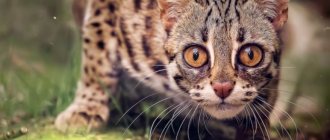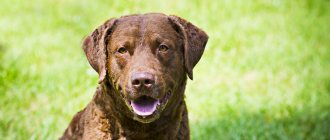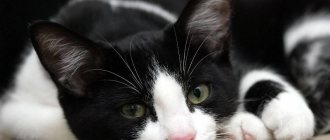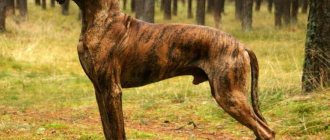Mini pigs - care and maintenance
The size and weight of a growing pig is affected by the diet and living conditions of the funny pet. It is advisable to purchase dwarf piglets at the age of about 2 months. Decorative mini pigs fed on mother's milk are less susceptible to infections and have improved immunity. The owners need to develop a diet for the piglets, prepare their personal space with a sleeping place, and devote the necessary time for games and walks.
Keeping a mini pig in an apartment
Small apartments are not suitable for piglets. It is ideal to allocate an individual room for them; in cages, mini pigs become sad and irritable. Many give these pets an old mattress, a sofa, a large basket, a spacious booth. The pig's personal area should be well ventilated and located away from drafts. Any change in the animal’s condition can signal an onset of illness; it is advisable to conduct periodic examinations and consult with veterinarians.
The flooring in an apartment is important; keeping a mini-pig in rooms with parquet, laminate or tiles is fraught with constant falls for the piglet. Curious animals are able to open refrigerators and poorly closed doors, staging uncontrolled feasts
You need to hide exposed wires, electrical appliances, household chemicals and dangerous objects from your pet in boxes and secure cabinets. It's good for pigs to be distracted from damaging property by having fun with strong toys for dogs.
How to care for mini pigs?
Playing on hard surfaces is necessary for piglets; the animals' hooves must be worn out naturally, otherwise the floors in the house will quickly suffer. It is recommended to trim them once every couple of years, enlisting the help of a specialist. The indoor pig easily gets used to the routine, loves to take water treatments, and remembers his place in the apartment. She is smart, loves her owner, but indulgences in the education process spoil her character. Male mini pigs must be castrated, otherwise they become aggressive.
What do mini pigs eat?
These animals love apples and bananas with pears, and willingly eat many types of vegetables. Pumpkin, squash, carrots, turnips, potatoes and zucchini are excellent food that the domestic pig loves; mini pigs eat cereals in the form of compound feed. It is better to steam cereals by pouring boiled water; fruit and vegetable products are grated and mixed with cereals. A couple of times a week, the piglets are offered low-fat cottage cheese and meat products. In small doses they are fed fish, beef fillet, chicken, excluding bones.
Breeding mini pigs
A sexually mature adult mini pig should be in the same room as a female in a room familiar to the female. For normal mating, 15 hours of spending time together is enough, but many experts recommend repeating the mating process after five days. After about 118 days, the pregnancy ends and the pig gives birth, so prepare a pen or nest in the house ahead of time. On the eve of childbirth, her nipples swell and her tummy drops. It is advisable to feed young animals with mother's milk, rich in essential microelements.
How to litter train a mini pig?
They do not produce a specialized tray for piglets; pig owners use spacious boxes with sides and small plastic pools. Cat litter is not suitable; babies often eat it, which leads to poisoning. It is advisable to place the toilet in a secluded place at some distance from the bed; the dwarf domestic pig likes to relieve itself away from prying eyes.
You can leave a small part of the litter in the tray; it will help the dwarf pig remember where his litter box is located. When your baby is toilet training, a schedule is drawn up and he is put there after a couple of hours to speed up the habituation. You cannot beat or harshly punish a pig for disobedience; upset pets will not understand your actions and the owners will not achieve a positive effect. Do not allow mini-pigs to walk around the house until they are six months old; the piglets forget about the toilet and do not yet have good control over their natural needs.
Maintenance and care
When choosing a pet, future owners are interested in how long mini pigs live. You need to be aware: such a pig will be in the house for a long time. With good care, she can live 12 - 15 years. Successful keeping of pigs rests on three “pillars”: nutrition, education, toilet.
Feeding
Mini pigs, like their larger counterparts, are omnivores. But you need to plan a diet for them carefully. If you overfeed, you will become obese. If you underfeed, dystrophy, vitamin deficiency, etc.
Fruits in children's diet will only be beneficial, except for citrus fruits.
Pigs up to one year old should be fed in small portions, four times a day. For older animals, the number of meals should be reduced to 2 per day.
What you can and cannot feed your mini pig is shown in the table below:
| Can | It is forbidden |
| Steamed cereals: rice, buckwheat, oatmeal. Fresh or boiled root vegetables: carrots, turnips, turnips, beets. Boiled potatoes. Any fresh fruit except citrus fruits. Chicken and fish fillet, beef liver. Whey, kefir, low-fat cottage cheese. | Sweets, salt, spices. Cat and dog food. Bread, cookies, pasta. Pickles and marinades. Smoked products. |
Food for mini pigs is enriched with fish oil, bone meal, and feed yeast. In the spring-summer season, variety is introduced into feeding, allowing the pig to graze on the grass
It is extremely important to ensure that the animal always has plenty of clean water.
Toilet
Little piglets are litter trained from a very early age. It is not recommended to use cat litter: pigs sometimes begin to chew it, mistaking it for food. It is better to fill the tray with clean sawdust.
Water is heaven for these pigs, they love to swim, so we advise you to prepare a bath for them, especially in summer.
Many everyday inconveniences, as well as problems with the health of the skin and hooves, can be avoided if you regularly bathe your piglet. Pigs love a warm shower, and in the summer they will willingly splash around outside in any suitable bath.
A responsible procedure for keeping and caring for mini pigs is regular cleaning of the eyes and ears. They need to wipe their eyes with a cotton sponge soaked in an aqueous solution of furatsilin. Simply clean your ears with a damp cloth.
In addition, it is important to monitor the condition of the hooves and, if necessary, file them with a low-abrasive acrylic nail file. Pigs that are kept in an apartment and do not go out much need a deeper “pedicure”
From time to time they will have to trim their hooves. The piglet should be taught this procedure from childhood so that it is not afraid and does not run away.
Mini-hogs need to have their tusks filed down so that they do not injure pets or damage furniture. The manipulation must be performed in a veterinary clinic.
Upbringing
The domestic dwarf pig is easy to train and train. By the age of one year, he should know at least a minimum set of commands: “no”, “place”, “come to me”, “walk”, “stand”, “lie down”. You will have to raise the pig using the old “carrot and stick” method, and in the literal sense. Pigs do not recognize any other rewards except treats, and no punishment other than a click on the snout.
Dwarf pigs are highly trainable.
From the age of two months, the piglet is taught to walk on a harness. An adult mini-pig must clearly know the time for walks and restrain “natural urges”. On the street, the pig is walked not only on grass and soft ground, but also on asphalt. Hard surfaces help the hoof wear down and there will be less hassle with trimming.
If a pig is frightened, it may squeal and bite violently. This is an instinctive pattern of behavior - a defensive reaction of the “victim”. When raising, this character trait of the animal is taken into account.
Subtleties of home maintenance
Decorative pigs are raised at home like dogs and cats, without restricting the animals’ movement in the apartment space. For large breeds, they prefer suburban accommodation, where they should organize special kennels and pens. Miniature animals, close to micro-sized, are easy to keep in a city apartment.
The tendency of pigs to become obese, especially after they reach 2 years of age, makes it mandatory for the owner to include in their diet and daily walking. The height of animals and their weight directly depends on the diet established for them and food restrictions.
Naturally intelligent, dwarf mini-pigs are easy to train, quickly learn simple commands and are quite obedient in nature.
Unlike ordinary breeds of pigs, decorative lines of animals have practically no smell. They are able to quickly learn to use the litter box. Among the main problems noted by owners of domestic pigs is their wayward character, because in the absence of proper training, these animals can be disobedient and often do not get along with children and the elderly, showing aggression.
Dwarf mini-pigs, ill-trained from an early age, like domestic dogs and cats, can spoil the furniture interior, so it is worth starting to accustom them to order at home from a very early age, when the baby has not yet grown into a big prankster.
How much does it cost to keep a pet?
Before starting a miniature pig breeding business, you need to evaluate all possible costs. Buying a pet will cost an average of 25 thousand rubles.
One-time expenses in the first month for going to the doctor, buying toys, a house, a tray, food bowls will cost at least three thousand rubles per pig. We take into account that we reimburse part of the costs ourselves; for example, we don’t buy a house at a pet store, but make it ourselves from a box and clean cotton rags. We adapt food containers to bowls.
Monthly food costs are about three thousand. Feeding regimen: twice a day. We give the piglets vegetables, fruits, and cereals. You can buy special food for piglets. It contains essential nutrients, a complex of vitamins and minerals. Suitable for owners who don’t want to rack their brains over what to feed their mini pigs. The volume of food should not exceed 10% of the piglet’s body weight. Be sure to include vitamins, mineral complexes, and fish oil in your diet.
The first birth is expected to occur after six months of the mini-pig's residence. It is better to invite a veterinarian; his services will cost 10 thousand rubles. If you decide to give birth on your own, you should prepare the room in advance. We set the temperature in the room to no lower than 26 degrees, you can turn on the heater. You should place food and a bowl of drinking water next to the pig.
Items you may need: sterile scissors, iodine, clean wipes, garbage bags. After cutting the umbilical cord, newborn piglets are wiped with clean napkins and their snout and mouth are cleaned of mucus. The umbilical cord is cauterized with iodine.
Babies weigh about 250-350 grams. They can live with their mother for up to three months, then they begin to be sold. You should monitor the weight gain of your babies and vaccinate them on time.
When they are two weeks old, complementary foods should be included in their diet. Gradually, the female's milk will begin to disappear.
Estimated start-up costs and business income
| Expenses | Income |
| Purchase of different sex pigs – 50 thousand rubles. | The average number of piglets born is 8 * 25 thousand rubles. |
| Purchase of a house, tray – 3 thousand rubles. * 2 pigs = 6 thousand rubles. | |
| Food, maintenance, treatment/month – 3 thousand rubles* 2 pigs = 6 thousand rubles* 6 month | |
| Payment for delivery by a doctor is 10 thousand rubles. | |
| Total expenses for six months: 110 thousand rubles. | 200 thousand rubles. |
Thus, the net profit is 90 thousand rubles.
Reproduction of mini pigs and life expectancy
The average life expectancy of such a pig at home is from 10 to 15 years. Sometimes the age reaches 20 years due to ideal living conditions.
There is a separate issue of reproduction. If you set out to start a business of breeding dwarf pigs, then you do not need to do castration. A female's pregnancy lasts an average of 114 weeks.
To get healthy offspring, a sow needs:
- eat healthy food;
- go for walks regularly;
- visit a veterinarian;
- have your own place in the house.
Reproduction and offspring
In one litter, the female gives birth to six to twelve pigs. Their striped coloration helps them camouflage themselves among the foliage and branches of the area they occupy. As a rule, there are no more than one brood per year. However, there are also cases of 2-3 births in females. This depends on the climatic conditions of the area where the wild boars live. Breastfeeding of newborn piglets continues until three or three and a half months
. As a rule, already in the third week of life, piglets are quite active and can move independently. Despite this, the mother is constantly aggressive towards any uninvited guests. The warlike female carefully protects her offspring.
Don't underestimate its capabilities. Even a female wild boar is capable of defending itself to the last or giving chase. An already wounded animal will not stop fighting the offender until its last breath. And with piles of muscles and sharp fangs, this is extremely dangerous for the boar’s opponent. Although for most avid hunters - thrill-seekers, this is not a problem at all.
Boars can also be bred in captivity
To do this, it is important to choose the right boar. When selecting it for a breeding program, factors such as origin from a particular species of non-deficient herd, performance, stability and conformation, age at puberty and other relevant parameters associated with potential intended breeding should be taken into account.
All boars to be used in the breeding program must, at a minimum, be seronegative for brucellosis. In addition, all male boars must be isolated and acclimatized for at least 45-60 days prior to mating and tested (or retested) for diseases dangerous to other relatives before being introduced into the herd. If boars are selected from large litters (more than 10 piglets) that reach puberty early (5½–6 months), they will typically produce high-yielding piglets that also reach puberty at an early age. Performance parameters such as feed efficiency and average daily gain are also highly heritable indicators.
Skeletal conformation and consideration for actual or potential locomotor dysfunction must be determined. Any painful deviation that may prevent the boar from approaching the female, establishing a foothold, successfully breeding and ejaculating should be identified in advance. For example, acute or chronic musculoskeletal conditions can cause pain that makes the boar seem uninterested in the installation. Boars are usually selected as breeding prospects for a period of 3-6 months.
The question of how long a domestic pig lives is difficult to answer unambiguously. Each livestock breeder has his own opinion on this matter. Domestic piglets are allotted by nature 10-15 years of carefree existence, but their life usually ends at the age of 1.5 years, when adult animals are sent for slaughter.
The question of how long a domestic pig lives is difficult to answer unambiguously.
There are many cases where pigs lived to old age. Representatives of the pot-bellied breed celebrated their 15th birthday, and some of their relatives lived up to 35 years. As you can see, the answer to the question of how long pigs live is not so easy to find. Weak animals can live less than 1 year. Farmers solve this problem by vaccinating against various quarantine diseases. Pets that live in normal conditions and receive various healthy supplements along with high-quality food will delight their owners with their existence for many years. But, as a rule, pigs are sent for slaughter at the age of 1.5 years, so it is difficult to understand how many years a pig lives in a household plot.
Wild pigs are luckier. They can live in the wild much longer than their counterparts. Their life expectancy is dictated by reality. Wild pigs can become prey to wolves or bears. In addition, they can be shot by hunters. An old wild boar or pig is rarely found in nature. But in zoos, animals live 2 times longer than in the wild. Under normal conditions and a balanced diet, their average life expectancy is 25-30 years.
Mini pig: care
Mini pigs are easy to care for. You just need to follow some rules, and then the animal will not cause trouble and discomfort.
- Clean your pig's ears using cotton swabs. Soak them in hydrogen peroxide or boric acid. Carry out the procedure once every six months.
- Wash your decorative pig often, even daily, as it loves water.
- Trim your hooves every 6 months. It is better to entrust this manipulation to a specialist.
- The decorative pig loves to walk. She loves to play outside. Therefore, you will have to leave the house with her once a day.
- Buy bowls for feeding; even dog plates will do. Pour water into one, leave the other for food. Grate vegetables, serve raw or boiled. You can cook porridge for your animal in water without using any spices at all.
Mini pig diseases
These warm-blooded animals are susceptible to various diseases, especially colds, and it is advisable to feed them food at room temperature, without offering cold water in hot weather. Mini pigs have good health, but they are strongly recommended to be vaccinated against erysipelas, rabies, swine fever, parvovirus, and other common infections. A good veterinarian will quickly tell you how to treat your pet against parasites. The personal hygiene of the pig owner must be at a high level; mini pigs are capable of transmitting parasitic diseases that are dangerous to humans.
Mini pig: care
Mini pigs are easy to care for. You just need to follow some rules, and then the animal will not cause trouble and discomfort.
- Clean your pig's ears using cotton swabs. Soak them in hydrogen peroxide or boric acid. Carry out the procedure once every six months.
- Wash your decorative pig often, even daily, as it loves water.
- Trim your hooves every 6 months. It is better to entrust this manipulation to a specialist.
- The decorative pig loves to walk. She loves to play outside. Therefore, you will have to leave the house with her once a day.
- Buy bowls for feeding; even dog plates will do. Pour water into one, leave the other for food. Grate vegetables, serve raw or boiled. You can cook porridge for your animal in water without using any spices at all.
If an adult mini pig weighs more than 20 kilograms, it should be kept in the garden. Dwarf pigs are allowed into the house, following a number of rules:
- arrange a sleeping place for your pet in the form of a house from a pet store, bedding
- organize a mountain of rags so that the pet can stir it up with its snout, as required by the pig’s genetics
- bathe the pig 2 times a week with special detergents for animals, or in plain water
- remove potentially dangerous objects from the reach of a curious pig
- take into account that mini pigs and adult pigs love to play, having prepared balls and other entertainment
- install a tray, but do not purchase filler, since the pet will simply scatter it
- trim the piglet's hooves every six months
Mini pigs, like dogs and cats, are walked on a leash. Usually it is attached not to a regular collar, but to a so-called harness. It wraps around the animal's body.
Keeping a mini pig can result in resting in the same bed. Like dogs, dwarf pigs try to move from the beds allocated for them to the side of their owners. If the plan at most fails, the pig tries to “stake out” the chair.
Domestic pigs need to be vaccinated. Preventative visits to the veterinarian are also required. Pigs are susceptible, for example, to ear diseases and can “grab” skin parasites. Systematic observation by a doctor will help to avoid problems with your pet’s health.
Before purchasing, you should decide where you plan to keep the piglet: in an apartment or on a personal plot. Large breeds are best kept in a private home. You can build a booth or pigsty for them.
When constructing, the climatic conditions of pets’ living conditions should be taken into account. To make cleaning easier, the floor can be made of concrete, and part of it can be insulated with wooden flooring. It is recommended to divide a spacious pigsty into several pens.
Dwarf decorative pigs can live in a room next to the owner. It will be enough to equip them with a house. You can buy it at a pet store. If desired, make a bedding from soft rags or give the pet an old chair or trestle bed.
It is better to insulate dangerous objects and wires from a curious mini pig. In order to prevent injuries, the floor in the apartment should be non-slippery.
In the first days after your pet arrives at home, you need to train him to use the toilet. This is quite easy to do. It is better to install your pet's tray in the bathroom. You should choose a large tray with low sides. It’s better not to buy filler; the pig will still scatter it in different directions. May accidentally tip the tray over. If you use a bathtub as a tray, lay down an anti-slip rubber mat. This will protect the pig from sprains and injuries.
Water procedures should be arranged as needed. Usually the pig is happy to go for a swim. Dwarf breeds practically do not shed and do not have a repulsive odor.
You should walk your pet every day, on a leash that wraps around the pet’s entire body. To prevent your piglet from getting lost when running in the park, teach him the basic commands: “come to me,” “next to me,” “sit.”
Personality of mini pigs
Strong creatures with erect ears and short curved legs grow up to three years. Compared to cats and dogs, they have much more conscious behavior , which means they are much smarter.
If mini-pigs are trained, they learn quickly and follow a wide variety of commands. Potential owners of a decorative pig need to know that pigs are very emotional and capable of making a lot of sounds. A satisfied pet will grunt quietly , but an irritated or dissatisfied pig may sharply throw back its head and scream loudly. Mini-pigs convey various information to people and their fellow humans using sounds. The sow always grunts quietly when she feeds her baby.
As soon as the pig is brought into the house, he immediately needs to show his place and who is in charge in the family. An ill-mannered pet who decides that he is the leader of the pack will not grow up to be docile and friendly. He will become assertive and arrogant, and will be quite difficult to deal with.
Piglets are very similar to small children, and they also love to play pranks. They need to be educated from a very early age . Mini pigs are very smart and are able to manipulate a loving owner until he does what they want.
Mini pigs love communication and get offended when people don't pay attention to them. Alone they feel bored and sad. Therefore, if the owner has a lot of work and is rarely at home , it is worth thinking about what you can do for the piglet in your absence. Many solve this problem simply; they get two decorative pigs.
Piglets are very curious and can tirelessly run around the house and rummage through things or dig holes in the yard, looking for treats. They are gifted with instincts, rich natural intuition and have a lot of positive advantages.
Main breeds of mini pigs
Despite the apparent simplicity of such a pet, the issue of choosing a breed of dwarf pig must be approached very responsibly.
Today, lovers of original pets have the following main breeds available for purchase:
a miniature variety of Bergströsser Knirt, bred on the basis of popular Chinese breeds. The weight of an adult female, as a rule, does not exceed 9-10 kg, and an adult male – 13-15 kg. This very popular breed in most European countries is distinguished by its kind and cheerful disposition, as well as boundless devotion to its owner;
the smallest and relatively new variety of Mini-Maialino, regardless of gender, weighs no more than 9-10 kg. The color of the animal can be black or black and white with spots. Such dwarf pigs are characterized by intelligence and learning ability, and also have a kind and flexible disposition, but in the absence of education they can be very capricious and vindictive;
The medium-sized variety of Wisenau mini-pigs is distinguished by a very characteristic square-type body and the absence of folds on the skin of the muzzle. This is not the best option for keeping in apartment conditions, which is due to its impressive weight, which in adults can reach 20-25 kg. As practice shows, this species is very smart, therefore it is able to learn to use the toilet in a certain place;
The closest relative of Vietnamese pigs is the original variety of Gottingen mini pigs. This dwarf pig has a very pronounced rounded tummy, and the weight of an adult often reaches 90-100 kg. The breed's characteristic feature is incredible gluttony, as well as its inability to control its appetite;
The average variety of mini pigs includes the Siberian miniature or dwarf pig, the weight of which varies between 45-50 kg. Such a pet has quite slender, long limbs, and is distinguished by the absence of a rounded tummy, and the characteristics of the skin and the presence of subcutaneous fat allow the animals to withstand low temperature conditions.
Until recently, only Vietnamese pot-bellied pigs were raised in our country as a dwarf breed. However, the significant weight of an adult animal, which often reached 100 kg, made it unsuitable for apartment living.
Appearance and description of the mini-pig
The coloring of mini pigs can be very varied. There are individuals with black, red, sand, marbled, brindle and mixed colors. The relatively active growth of such a pet occurs only in the first one and a half to two years of life, after which the pet can “go wild”, gaining significant weight.
The average weight of an adult standard mini-pig can vary between 30-80 kg, and micro-pigs weigh significantly less - 10-30 kg. In most cases, the weight and height of a dwarf pig are determined by the diet and quality of nutrition, as well as the use of diet.
This is interesting! There are cases when an adult mini- or micro-pig had a body weight of no more than 6-10 kg, but this weight feature is not a breed characteristic, so today it is very rare.
Lifespan
Subject to absolutely all conditions of detention, systematic preventive veterinary examinations and vaccinations, as well as complete and balanced feeding, the average life expectancy of a dwarf pig rarely exceeds 12-15 years, but long-lived pigs are known that have “stepped over” even the twenty-year mark.
Return to content
Do pigs have longevity?
It is very difficult to keep statistics on pig life expectancy and record record numbers. Most often, decorative pigs that are provided with excellent home care have this chance. Families keep them as pets. For example, these are dwarf pigs.
Cases have been recorded of pets living their lives for over 35-36 years. But this is not a rule, just exceptional cases. Only a small part of the population agrees to keep pigs, even decorative species, in the house as a pet.
Pigs are long-lived
The next case of pig longevity was recorded in the Bahamas. The information here concerns Babe the wild boar. The local population was able to tame the pig and he lived near people for about 4 years. Well amenable to training. He's only 13 for now, but that's not the limit.
How we got a mini pig
We have, one might say, an exemplary pig, because we follow the breeders’ recommendations and adhere to the diet. When we took him, he was ugly, bald, and fit in the palm of our hand. Now he weighs about nine kilograms, he is one year and three months old, height at the withers is 30 centimeters, length is 40. At two years old his teeth will change.
When my husband and I wanted to get a pet, we thought about a Maine Coon or a Labrador, but one friend offered to babysit a mini-pig during her vacation. For us it was something new and outlandish, we happily agreed. In ten days with my pet, I realized that I didn’t want anyone else.
My husband was skeptical because we had not spent much time with the mini-pig, plus we had just renovated our new apartment. In addition, he had prejudices that all pigs are dirty and spoil everything in the house. The discussion went on for several months, I continued to argue for, and my husband firmly defended the position “against”. And at some point he said: “No, we won’t get him,” and then on our wedding anniversary he went to the nursery and brought back a palm-sized gift with a huge blue bow. Emotions were overflowing.
The pig costs about 40 thousand. Perhaps now, on the eve of the New Year, the price tag has jumped. There are four breeds of mini pigs: mini Mayalino, Vietnamese pot-bellied, wiesenau, and Bergsträsser knirt. The pate belongs to the Bergsträsser Knirt breed. Many people confuse the terms “mini-pig” and “micropig”. Mini-pigs are artificially bred small pigs. For example, the Vietnamese potbellied or wiesenau. They reach a weight of no more than 50–70 kilograms. It's just a mini pig. There is no official concept of “micro”, but it includes the Bergsträsser Knirt and Mini-Maialino breeds. They should not grow more than 15 kilograms. They are mini-pigs in the sense that everyone is used to. For comparison: an ordinary industrial pig can reach 300–500 kilograms. There is also no concept of “teacup-pig” - these are small cubs of any mini-pig up to two to three months.
Unfortunately, sometimes instead of mini-pigs they put in regular piglets that have been driven to terrible exhaustion
It is very important that people do not fall for this. Real mini pigs are not very common yet
There are only three or four breeders who sell good animals from reliable producers. We have an excellent nursery, located in Sergiev Posad.
How do mini pigs grow?
The first mini-pigs were bred by German breeders for laboratory purposes, crossing wild boars with small Vietnamese pot-bellied pigs. The resulting pigs were liked by enthusiasts involved in breeding pets for apartment dwellers. The breed does not have a precisely standardized size. The color of individuals is varied; the offspring may have piglets with bristles of red, sand, brindle, marble and other shades.
A standard dwarf pig grows up to 80 kg, but there are small specimens in the offspring, which are called micro-pigs, not exceeding 30 kg, and large animals under 120 kg. Miniature creatures weighing up to 10 kg are rather an exception to the rule. Now work is underway to develop a full-fledged breed of tiny stature in order to consolidate this trait at the genetic level.
How long do domestic breeds live?
As a rule, domestic pigs are raised for subsequent slaughter for meat or lard, and these products usually taste better if the animal was young. Because of this, in agricultural enterprises and private farms, the majority of piglets do not live to the age of two - by this moment they have time to grow and gain weight, after which the rate of weight gain begins to rapidly decline, and the sexual activity of the four-legged animals can negatively affect the quality of their products.
For this reason, there are not many statistics describing the maximum lifespan of a domestic pig - it is believed that for a female it is approximately 15–25 years, while a boar can last 35–45 years. Such a big difference is caused by the fact that the pig’s body is greatly depleted and worn out due to frequent farrowing.
At the same time, life expectancy also depends on such a concept as breed. In nature, as a rule, larger animals have an increased life expectancy, if only because they need more time to grow, and babies, accordingly, do not live long.
This rule in general also applies to pigs - for example, for representatives of medium-sized breeds, a rather modest 10–15 years are considered normal life expectancy, and decorative dwarf pigs usually do not live longer than eight years.
Moreover, the life expectancy of each breed also depends on compliance with certain conditions, which differ in each case. For example, the Duroc breed, which is popular all over the world, is bred relatively infrequently in our country, since it requires special nutrition, very rich in protein. Provide your pet with such nutrition - and he may well live up to the age of 20 years, however, with any other diet, the animal will no longer be fully healthy.
The Hungarian Mangalica is also not very well known in our country, but it is rapidly gaining popularity as one of the most famous delicacy breeds throughout the world. In addition to the amazing marbled meat, this pig is also good because it is completely undemanding in care compared to the rest of its relatives - it tolerates the cold well, and can confidently manage without most vaccinations.
It would seem that because of this she should live less, because she is exposed to various inconveniences, but no - her “ceiling” is estimated on average at 25 years.
Landraces, well known for their ability to very quickly turn from piglets into adults and reproduce just as quickly, become victims of their own precocity. Thanks to the accelerated metabolism, the animal not only grows up, but also ages quickly, and a typical farrowing of one and a half to two dozen babies simply cannot but affect the uterine body in the most negative way. It is not surprising that even with completely correct maintenance, representatives of this breed usually do not live longer than 15–20 years.
The Vietnamese pigs, common today in our country, are curious not only for their tasty meat and lard, but also for their cleanliness - such an animal, contrary to the widespread stereotype about the uncleanliness of pigs, even in a pen, does not like dirt very much and understands the meaning of a separate latrine.
The owner is obliged to keep such cats in a dry and clean barn, providing the pets with a pen large enough for the guests to divide it into a “toilet” and the rest of the area. Perhaps it is precisely because of their cleanliness that these animals, being less likely to get sick, have an increased life expectancy, which for them ranges from 20 to 30 years.
The most typical pig for our region belongs to a breed that is called white. The meat of such an animal has been tried many times by any person who approves of pork - it can hardly be called a delicacy, but in general its quality is quite acceptable.
The massive popularity of this breed is due to the fact that such a piglet rapidly gains mass and reproduces very quickly, and no one looked at the life expectancy when breeding the breed - the task was not at all to prolong it. As a result, such pigs, overly prone to gaining excess weight and poorly tolerating not only cold but also heat, live up to 15 years only under a particularly fortunate combination of circumstances.
Types of dwarf domestic pigs
This is a pet, often used in medical research
. The most common species are:
- Bergströsser knirt weighs up to 30 kg. The breed is common in Europe. This pig is considered one of the smallest, which is why it is most popular (especially among owners living in an apartment and not in a private house). The color options for the breed are varied.
- The Vietnamese pot-bellied pig is considered the ancestor of modern mini-pigs. It was brought to Europe from Vietnam. The most common colors are black and dark red. The hairline resembles a kind of mohawk.
- Siberian miniature . She is sometimes called a mini-sibsy. Its ancestor is also the Vietnamese pot-bellied, but it was bred in the 1970s. in USSR. The weight of this little pig, compared to others, does not exceed 50 kg.
- The Gottingen domestic pig is considered the youngest breed; the animal's weight can reach 100 kg. In most cases, the color is black, less often with white spots. This breed has an arched body, a rather rounded belly and a moderately raised snout. By nature, these are very curious and playful pigs.
- Wisenau . This pig is medium in size (20-25 kg). It was named after a commune in Germany. Her color is black and white with stripes. A distinctive feature is an elongated nose. Representatives of the breed are quite intelligent, and most owners manage to train them to use the toilet in a designated area.
- Mini Mayalino . The breed was bred by Italians and is considered the smallest mini-pig. In size, even as an adult, the animal is slightly larger than a cat. The average weight of such an adult pig is about 10 kg. Color is either white or black.
Be sure to read:
Vietnamese pigs: features of breeding and keeping at home











